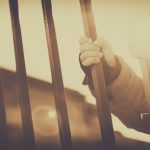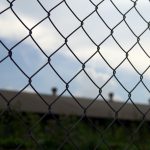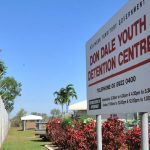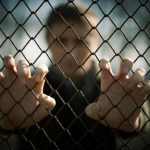Abuse of Children in Australian Detention Centres Continues
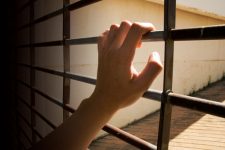
Fifteen youths are still being detained on remand (ie with their cases yet to be heard) at Victoria’s Barwon maximum security adult prison on the outskirts of Geelong in a move the Victorian Supreme Court ruled unlawful in December last year.
The Andrews government began transferring youth detainees to the Grevillea unit in the adult correctional facility last November. At the time, fifteen children were sent there after a riot broke out at the Parkville youth justice centre.
A further four children were sent to the adult prison in January, following a similar riot at the Malmsbury youth justice centre.
Most of the children are aged between 15 and 17 years.
A new court challenge
A fresh legal challenge was launched in the Victorian Supreme Court by human rights lawyers last week, against the Victorian government’s decision to continue detaining the youths in the adult prison. The legal action came amidst reports of Don Dale-style abuses of the children by guards.
The barrister for the children, Dr Ian Freckelton QC, told the court that the youths had been held in isolation for up to 23 hours a day, and were being exposed to capsicum spray through the ventilation systems. He submitted that the facility was incapable of meeting the children’s needs under the law.
The hearings were completed last Friday, but the decision by Justice John Dixon is still pending.
Sidestepping the Supreme Court
On December 20 last year, the Supreme Court ruled that the youths detention in the adult facility was unlawful under section 38 of the Victorian Charter of Human Rights and Responsibilities, as authorities had failed to give proper consideration to their human rights.
The detention was additionally unlawful because Victorian minister for youth affairs, Jenny Mikakos, had failed to consider the developmental needs of the children as required under section 482 of the Victorian Children Youth and Families Act 2005.
The state government appealed the decision to the Victorian Court of Appeal on December 28.
Amnesty International campaigner, Julian Cleary, pointed out that the proceedings over the Christmas break were rushed. Nevertheless, the appeals court confirmed that the detention was unlawful due to “the failure to consider section 482 of the CYF Act.”
Having reached that decision, the court did not feel the need to make a determination about the alleged breach of human rights.
“The Victorian Government immediately sidestepped this decision,” Mr Cleary told Sydney Criminal Lawyers®, by reclassifying the Grevillea unit “of the Barwon facility as a youth detention centre and claiming now to have considered section 482 in so doing.”
Intimidation and excessive force
Amnesty International has documented reports of abuse at the Grevillea unit that were obtained from the children’s lawyers. These include some youths, after having been in lock down for 23 hours, being made to wear handcuffs during the one hour that they were released from their cells.
Other young inmates reported being pepper sprayed by guards during a disturbance, even though they weren’t involved and were simply eating their dinner. In another incident, it was alleged guards brought German shepherds into the youths’ cells to intimidate them.
There are also reports of guards kneeling on the backs of child detainees, while other officers held their faces to the floor and incapacitated their arms and legs, leading to visible injuries including bruising.
Overuse of isolation on children
According to Mr Cleary, “being held in solitary confinement is known to increase risk of self-harm.” He further stated that “nearly two thirds of children in youth detention in Victoria have suffered trauma, abuse or neglect.” And this sort of isolation “can exacerbate this trauma and lead to further harm,” he said.
A report released last month by the Victorian Commission for Children and Young People found that throughout the Victorian youth justice system, children and young adults are being subjected to unacceptable levels of isolation, and are routinely being locked down.
The report found that 23 percent of isolations were imposed for only an hour, but others were significantly longer, some up to 24 hours or more. The inquiry also found that some detainees were on separation plans, being kept apart from the rest of the centre for up to 45 days at a time.
Another riot in Victorian youth detention
CCTV footage of a riot that broke out in the Grevillea unit on February 13 was shown during last week’s Supreme Court hearing. The footage depicts some of the youths throwing chairs at guards, as the officers rush in spraying capsicum gas.
This brings the number of riots in Victorian youth justice centres to 30 since January last year. Many of the youths are being held on remand and protesting about their treatment at the hands of prison guards.
Jesuit Social Services chief executive, Julie Edwards, pointed out in February that a whopping 80% of young inmates in Victoria are on remand. She said this is leading to a “system full of people who have a lot of uncertainty.” They don’t know how long they’ll be in there, and they’re “basically bored.”
Regular prison guards responsible for child detainees
At the Grevillea unit of Barwon prison, regular prison guards are in charge of the children. They have no training in dealing with traumatised children, and in fact, there usual job is guarding adult prisoners in a maximum security prison.
Mr Cleary remarks that not only are these children being detained in a prison designed for some of the state’s most hardened adult offenders, they’re also being “denied adequate access to education, visitors and recreation.”
Indeed, a 2013 Victorian ombudsman report into children transferred from the youth justice system to the adult prison system found there “are no circumstances that justify the placement of a child in the adult prison system.”
“Failure to hold children in age appropriate settings limits their chances of rehabilitation and makes them more likely to reoffend,” Mr Cleary concluded, adding that the long-term effect of this treatment “is likely to lead to further entrenchment in the prison system.”
Receive all of our articles weekly
Authors

Paul Gregoire


